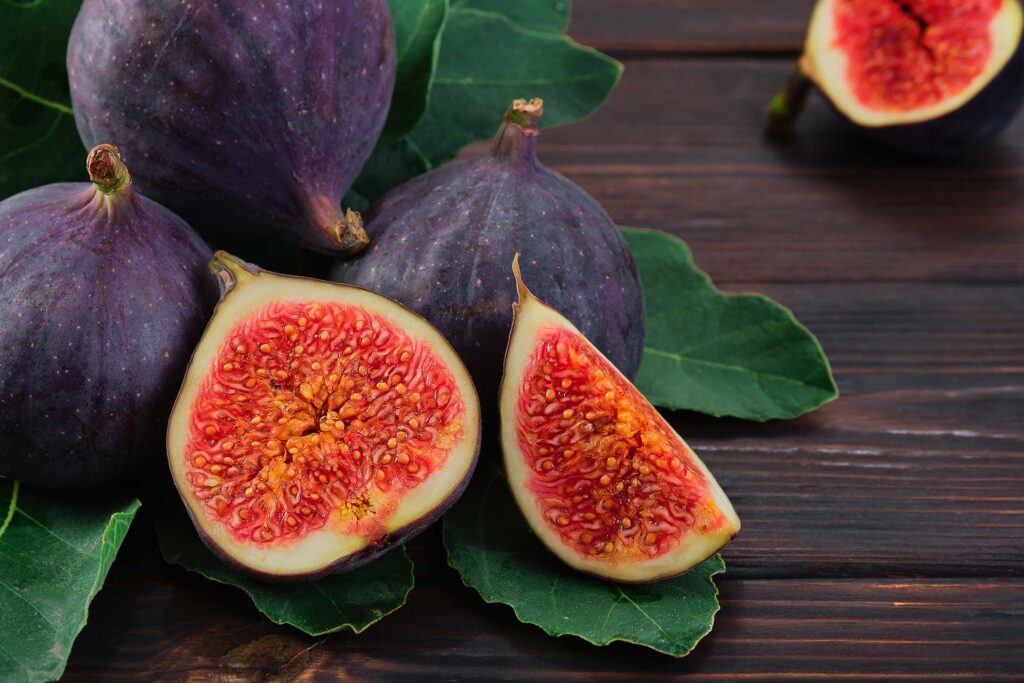
Figs are unique fruits with a rich history and a range of culinary and nutritional benefits. Here’s some information about them:
1. Origin: Figs are believed to be one of the oldest cultivated fruits, with evidence of their consumption dating back to ancient times in regions like the Mediterranean and Middle East. They are native to Western Asia and the Middle East but are now grown in many parts of the world with suitable climates, including Europe, North America, and parts of Africa and South America.
2. Appearance: Figs are soft, pear-shaped fruits with a thin skin that can vary in color from green to purple or black, depending on the variety. The flesh inside is usually pink or red and contains many small, edible seeds.
3. Varieties: There are hundreds of fig varieties, each with its own unique flavor, texture, and color. Common varieties include Black Mission, Brown Turkey, Kadota, Calimyrna, and Adriatic. Some fig varieties are grown for fresh consumption, while others are better suited for drying or processing.
4. Nutritional Value: Figs are a good source of dietary fiber, vitamins, and minerals. They are particularly high in potassium, calcium, magnesium, and vitamins B6 and K. Figs also contain antioxidants, such as phenolic compounds and flavonoids, which may have various health benefits.
5. Health Benefits: Consuming figs may offer several health benefits. The high fiber content promotes digestive health and may help prevent constipation and improve bowel regularity. Figs also contain prebiotics, which support the growth of beneficial gut bacteria. Additionally, the antioxidants in figs may help reduce inflammation and protect against chronic diseases like heart disease and cancer.
6. Culinary Uses: Figs can be eaten fresh or dried and are used in a variety of culinary applications. Fresh figs are delicious on their own or paired with cheese, nuts, and honey in salads or appetizers. They can also be roasted, grilled, or poached to enhance their flavor. Dried figs are commonly used in baking, cooking, and snacking, and are a popular ingredient in desserts, jams, and preserves.
7. Harvesting and Storage: Figs are harvested when fully ripe, as they do not continue to ripen after being picked. They are usually hand-picked to avoid damaging the delicate skin and are sorted based on ripeness and quality. Fresh figs should be consumed promptly or stored in the refrigerator for a few days. Dried figs have a longer shelf life and can be stored in a cool, dry place for several months.
8. Cultural and Symbolic Significance: Figs have cultural and symbolic significance in many societies and religions. They are often associated with fertility, abundance, and prosperity and are mentioned in various religious texts and mythologies.
Overall, figs are not only delicious and versatile but also nutritious and culturally significant fruits enjoyed by people around the world.
